Linux, the open-source operating system, has a rich and fascinating history. While many are familiar with its core principles and widespread use, there are lesser-known aspects that add depth to the Linux story.
In this article, we’ll explore into 25 interesting facts about GNU/Linux that might surprise you.
Table of Contents
1. Linux is a Kernel
Linux is essentially a kernel and not an operating system. The term “Linux” is commonly used to refer to operating systems based on the Linux kernel such as Ubuntu, Debian, Fedora, Mint, and so much more.
These are correctly referred to as Linux distributions or flavors since they ride on the Linux Kernel, which is the core of any operating system and interfaces the underlying hardware with the operating system and installed applications.
2. Linux Has Its Origins in UNIX
The Linux Kernel was developed by Linux Torvalds, a Finnish computer scientist. It was officially released in 1991 under the GNU General Public License.
It was a hobby project he was working on while still a student at the University of Helsinki. He was working on a project based on Minix, a UNIX-based operating system.
3. Linus Never Intended to Make Money Out of Linux
As a strong advocate for open-source software, Linux never intended to commercialize Linux. In fact, as a hobby project, Linus Torvalds, the creator of Linux, never envisioned making a profit from his groundbreaking operating system.
When he started working on Linux in 1991, his primary motivation was to develop a free and open-source alternative to proprietary Unix systems. Torvalds released Linux under the GNU General Public License, ensuring that it would always remain open for anyone to use, modify, and distribute freely.
This commitment to openness and collaboration led to rapid growth and popularity over the years to become one of the most essential operating systems in the IT world.
4. Hundreds of Linux Distributions
Currently, there are over 600 Linux distributions ranging from popular distributions (or distros) such as Ubuntu, Debian, and Fedora to newer distributions such as Rocky and AlmaLinux.
You can get a comprehensive list of all the distributions on distrowatch.
5. The Vastness of Linux Code
As of November 2023, the Linux kernel has over 36 million lines of code, in accordance with the latest stable versions available at that time is – Linux Kernel 6.5.
The vastness of code is due to the fact that the Linux kernel is responsible for a wide range of tasks, including managing the hardware, memory, and processes of a computer system.
6. Linux Is Written in C Language
The Linux Kernel is predominantly written in C and hosted on GitHub. It enjoys an impressive 160k stars with over 14,600 contributors to its code.
The first kernel version – Version 0.01 – contained about 10,000 lines of code.
7. Tux Is The Official Mascot of Linux
The official Mascot of the Linux kernel is a Penguin character called Tux. The idea was inspired by Linus’ encounter with a Penguin at a National Zoo during his trip to Australia in 1993.
This is the commonly used logo for Linux and is depicted in various graphical styles.
8. The First Linux GUI Distribution
One of the first Linux distributions is the Softlanding Linux System, shortened as SLS. It was the first Linux distro to include the X window system or GUI (Graphical User Interface).
It was released in 1992 and was the predecessor to Slackware which was released on July 16, 1993, and is supported to date.
9. Debian: The Mother of Many Linux Distributions
Debian was among the first GNU/Linux distributions to be community-driven. Debian 0.01 was the first Debian release and was made publicly available on September 15, 1993. Its first stable version – Debian 1.1 – was released on June 17, 1996.
Debian is considered the ‘Mother’ of many Linux distributions. Popular Debian-based Linux distributions include Ubuntu, MX Linux, Deepin, Pop! OS, Zorin OS, and Kali Linux to mention a few examples.
10. The First Commercial Linux Distribution
Yggdrasil is the first commercial Linux distribution and was released in Live CD format on 8, December 1992, offering a unique blend of open-source software and a user-friendly interface for sale, marking a significant milestone in the history of Linux.
Yggdrasil incorporated the X Window System and provided a graphical user environment when Linux was primarily command-line-based. Although it faced competition from free Linux distributions, its pioneering approach paved the way for the commercialization of Linux and the development of more user-friendly distributions in the years that followed.
11. Linux Dominance in Supercomputers
It commands a market share of 48% as of June 2022. In addition, it powers nearly 90% of the cloud and is the most widely used operating system on popular cloud platforms including Microsoft Azure and AWS.
As a result, Linux has become the operating system of choice for pushing the boundaries of scientific and technological innovation in the supercomputing arena.
12. Linux Powers a Multitude of Devices
Nowadays, Linux runs on almost anything: servers, desktops, smartphones, smart watches, etc. Almost every hand-held device has a Linux kernel at the core of its operating system.
Linux’s open-source nature allows developers to customize it for different devices and software needs, making it a widely used operating system in the world.
13. Linux Dominates Web Servers
By 2023, 96.3% of the top 1,000,000 web servers were reported to run on Linux. The Android operating system is based on a highly modified version of the Linux kernel.
Many websites you visit daily are hosted on servers running Linux due to its stability and security making it a top choice for web hosting companies, as it can handle a heavy load of website visitors without slowing down.
14. Linux on Every Major Space Station
Linux is used in every major Space Station including NASA, International Space Station (ISS), and private space companies such as Space X.
Its reliability and open-source adaptability make it an ideal choice for critical systems, ensuring smooth operations and supporting astronauts in their endeavors beyond Earth’s boundaries.
15. Linux Market Share
Linux has gained ground as the third most popular desktop operating system, with a 2.92% market share as of October 2023, according to Statcounter. Beyond desktops, Linux’s reach extends further, serving as the backbone for a staggering 90% of the world’s cloud infrastructure.
Its versatility, open-source nature, and robust performance have made it a prominent player both on personal computers and in the vast network of servers powering the digital services we rely on daily.
16. Acquisition of Red Hat
In July 2019, IBM finalized its acquisition of Red Hat, marking a significant milestone with a hefty investment of nearly $34 billion. Red Hat holds a prominent position as the leading Enterprise Linux distributor in the server market.
This strategic move solidified IBM’s commitment to expanding its presence in the open-source software arena and harnessing Red Hat’s expertise to enhance its capabilities in providing enterprise solutions and cloud services.
17. Ubuntu: The Global Leader in Linux Desktop Adoption
Ubuntu‘s status as the most popular Linux desktop globally can be largely attributed to its clean, simple, and intuitive user interface, ensuring a seamless user experience.
This appeal makes it particularly well-suited for newcomers to the Linux world or Windows users making the transition to Linux. Ubuntu’s user-friendly design, combined with its extensive software ecosystem and strong community support, has established it as a go-to choice for those seeking an approachable and efficient introduction to the Linux operating system.
18. When Torvalds Declined an Offer from Apple
In the early 2000s, a significant moment in tech history unfolded when Steve Jobs, the co-founder of Apple Inc., extended an offer to Linus Torvalds, the creator of the Linux kernel, inviting him to join Apple’s team and contribute to the development of OS X.
However, Torvalds declined this enticing proposal. This decision ultimately solidified Torvalds’ dedication to the open-source principles of Linux and its community, as he continued to lead the development of the widely acclaimed Linux kernel.
19. The Rivalry Between Microsoft and Linux
Microsoft waged war against Linux in the early 2000s seeking to stop its spread and usage. It incurred a staggering $421 million in the process.
Nowadays, the two operating systems are no longer locked in battle, and in fact, there’s been more collaboration between the two in recent years.
20. Integration Between Linux and Windows
Windows Subsystem for Linux (WSL) is a feature in Windows that allows developers to run Linux on a Windows environment without having to dual-boot or run a virtual machine.
SQL Server 2017 was the first SQL version to run on both Windows and Linux environments. You can run other Windows native apps and games using WINE, a compatibility layer that lets users run Windows applications on Linux.
21. Linux Is Extremely Versatile
Modern Linux desktop distros provide applications that allow you to perform virtually any operation including software development, browsing, graphic design, video editing, gaming, entertainment, and much more.
This versatility extends to entertainment options, making it a one-stop solution for diverse needs. Whether you’re a professional or a casual user, Linux’s rich ecosystem ensures you can perform virtually any operation efficiently, contributing to its growing popularity in the desktop computing world.
22. Linux Trademark Dispute
A guy named William Della Croce Jr registered the name Linux and demanded royalty for using its name and mark. However, this contentious situation was ultimately resolved when Della Croce agreed to transfer the trademark to Linus Torvalds, the creator of Linux.
This transition secured Linux’s open-source status and ensured that its name and mark remained freely accessible, allowing the Linux community to continue flourishing and innovating without hindrance.
23. An Asteroid Named in Honor of Linus Torvalds
Linus Torvalds, the renowned creator of the Linux kernel, received a unique and celestial honor when an asteroid was named after him. This astronomical recognition symbolizes his significant contributions to the world of open-source software and technology.
The asteroid named “9793 Torvalds” serves as a testament to Torvalds’ enduring impact on the tech industry and the global community of Linux enthusiasts, solidifying his legacy not only on Earth but also among the stars.
24. Linux Visual Effects in Titanic and Avatar
For those who doubt Linux’s capabilities in animation, consider this: the Oscar-winning visual effects of James Cameron’s legendary film “Titanic” were crafted using Linux-powered machines.
Even more impressively, “Avatar“, Cameron’s groundbreaking 3D cinematic masterpiece, marked the last movie to be entirely developed on a Linux platform using Free and Open Source Software (FOSS) applications.
25. Cost of Redeveloping the Linux Kernel
Redeveloping version 2.6.0 of the Linux kernel in a traditional, non-open source way was estimated to cost around $612 million in 2004.
Another study in 2006, funded by the European Union, suggested that redoing version 2.6.8 would be even more expensive, at about $1.14 billion. These estimates show how much money could be saved by using the open-source approach of developing Linux.
Conclusion
These lesser-known facts shed light on the rich and diverse world of GNU/Linux, emphasizing its adaptability, cost-effectiveness, and the invaluable role it plays in technology, from servers to everyday devices.
This is not the end. If you know any other interesting facts about Linux, feel free to share them. Your comments are highly appreciated.

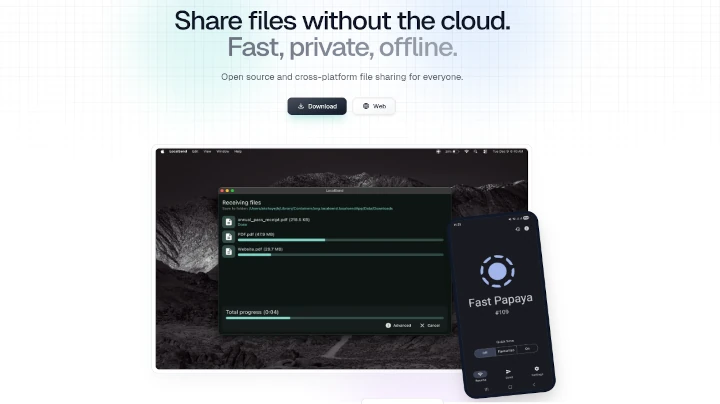
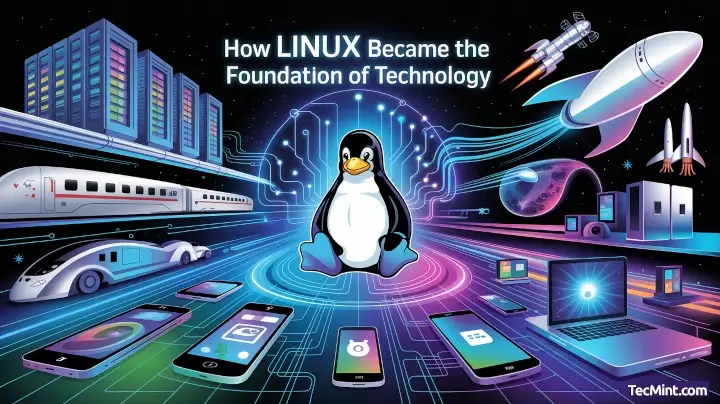
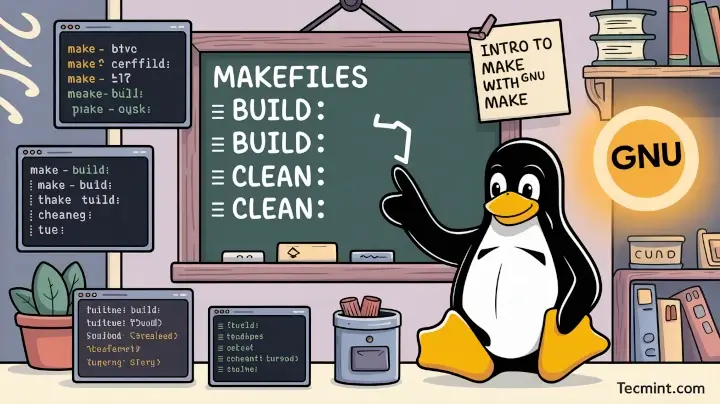
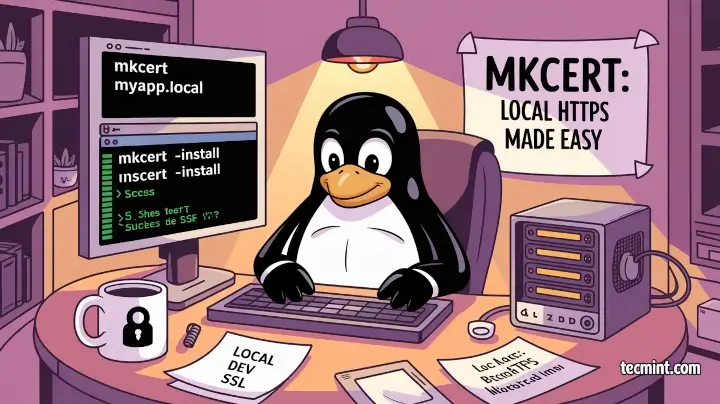
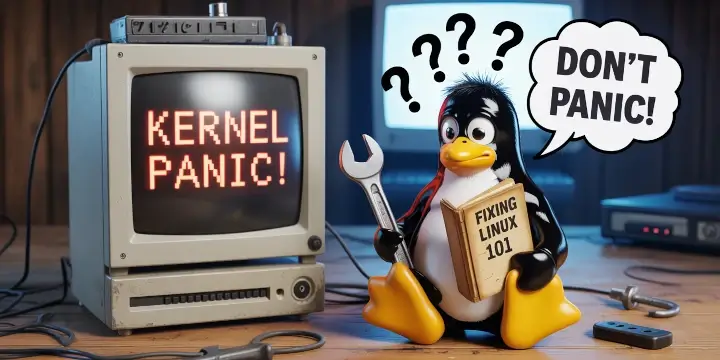
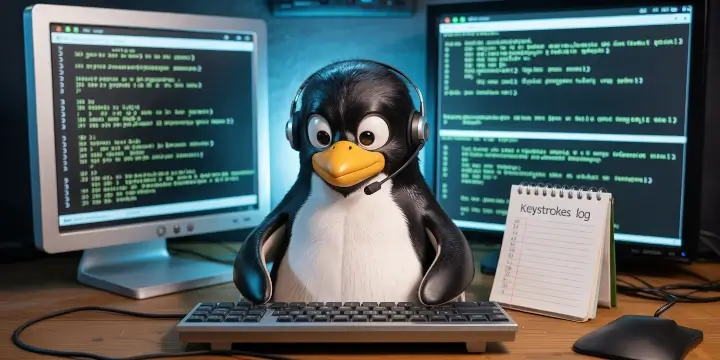
Ah, this is what I love about Linux, Everyone is an expert, and nit-picking everything to death is so much fun.
Keep it up, guys!
SLS was not the first Linux distribution. Historically, the very first Linux distribution was MCC Interim Linux, released by Owen Le Blanc in February 1992.
It was the very first Linux distribution to feature a menu installer. Second, TAMU Linux was the very first Linux distribution with X window support.
SLS Linux distribution was preceded by TAMU Linux distribution released back in May 1992 while SLS was released in August 1992.
> 3. Torvalds created Linux based on GNU General Public License (GPL). Perhaps Torvalds would have never written his own kernel if GPL would be having it’s own kernel and driver.
GPL is a License, so its nothing a Kernel can be based on (i think you mean GNU)
Also Linux was not designed on the base of the GNU Operating System, the opposide, GNU wanted to use Linux as their Kernel until their own is finished.
Also a friend hat to convince Linus to release Linux under the GNU/GPL he did not wanted to in the beginning.
I don’t see any lie as said on this article.
One thing, on topic 3, the choosing of the license (according to the book: just for fun) was made after the creation of the Linux kernel. Linus chose the GPL license because he thought it was more interesting rather than other licenses.
The rest is true. Good article!
I just wanted to point out a little flaw in something you said regarding Windows Media Center. You said, “A PC entertainment system that comes with Windows 7 and later”, this is untrue. Media Center first appeared in Windows XP as Windows Media Center Edition and has has been a part of Windows through Vista and 7. In Windows 8 it is an additional add-on that must be purchased/installed separately.
To the people screaming about “this program or that program” stop it… It is impossible for one guy to list every random alternative program. In fact I can think of tons that were missed, like kontact (KDE’s mail/calendar/contact suite). Kontact is great though it lacks Exchange support which is a let down. Evolution is probably the only real viable alternative to outlook as Evolution can actually connect to Exchange and can even sync your calendar.
> GNU Linux is the OS and it comes in several hundred flavours.
https://www.gnu.org/gnu/gnu-linux-faq.en.html#whyslash
> 11. Linux Torvalds has been honoured by naming an astroid after his name.
Yes, both Linu_x_ and Torvalds, and GNU and Stallman.
https://en.wikipedia.org/wiki/9793_Torvalds
https://en.wikipedia.org/wiki/9882_Stallman
https://en.wikipedia.org/wiki/9885_Linux
https://en.wikipedia.org/wiki/9965_GNU
There is also a Free Software Street: https://en.wikipedia.org/wiki/Free_Software_Street
In point 13, you probably meant that it runs on various CPU architechture instead of Operating system, in the last line. Please correct it.
3. Torvalds created Linux based on GNU General Public License (GPL). Perhaps Torvalds would have never written his own kernel if GPL would be having it’s own kernel and driver.
*WRONG* Linus first released his kernel with a non-commercial license. It was only when he released Linux 0.12 that it was licensed under the GPL (2.0)
1. Linux is not an OS, but it is the kernel, GNU Linux is the OS and it comes in several hundred flavours.
This is rather tiring. The GNU project is impressive, but hardly dominates Linux OS efforts:
The kernel: run by Linus. Nothing to do with GNU
The compiler[s]: gcc was absolutely needed to get Linux off the ground, but eventually was taken over by Cygnus Solutions well before Linus wrote a line of Linux (probably the first company to make money with open source). Cygnus was bought by Red Hat in 1999.
X-11: MIT licensed. Run by the X consortium. No GNU ties.
KDE: so non-GNU that RMS threw a hissy fit when they had to fix their licensing.
GNOME: Created with the twin goals of a desktop untainted by a momentary lapse of free licensing and a C language interface (KDE has an innovative C++ interface). Created for, if not by GNU
Massive packaging: most of the stuff you get on a Linux distro download. It likely comes either from debian (which is ideologically similar to GNU) or redhat (for .rpm based systems). These take tons of non-GNU programs and make them easily available for Linux.
Project GNU: The shells, core, libraries (especially POSIX). Basically the layer between the kernel and the apps.
It isn’t much of a stretch to claim that the project GNU parts outweigh the kernel, but somehow Linus got much of the rest excited about Linux and got the ball rolling. We he told RMS to go ahead and use the term “GNU Linux”, he expected just a FSF distro, not an effort to rename Linux as GNU-Linux.
I’ve seen this before and it gets tiring. While it is easy to claim “Linux is not an operating system”, that same definition disqualifies “GNU-Linux” as well. You need a whole lot more Linux to make a useable system, and there is no need to call it anything but Linux.
The article has some interesting facts, thanks for sharing it. I’m curious at some of the anachronisms, though, as it seems to be about 3 years old. It actually specifies January 2010 in item 25. Is Avishek Kumar the original author, or is this a repost? If the latter, who collected the original entries?
Some updates:
#21 Palm sold webOS to HP, and it powered the world’s shortest lived product line (except perhaps Microsoft’s Kin phone). It has now been relegated to community support by HP, but I’m not aware of any product using it.
#21 Nokia’s Maemo merged with Intel’s Moblin to form MeeGo, which powered the critically acclaimed Nokia N9. Nokia then cancelled their MeeGo line in exchange for a $1 billion cheque and WinPhone 7 from Microsoft, losing virtually all of their formerly dominant smartphone market share in the process. Intel then partnered with Samsung on MeeGo, rebranding it Tizen and refocusing on web and Android apps; Samsung will ship their first Tizen phones this year. The original Maemo / MeeGo developers left Nokia to form their own company, and just announced their first phone called Jolla (rebranding their branch of the OS to Jolla and adding Android app compatibility as well). Meanwhile, several carriers will begin selling very low-cost FirefoxOS-based phones this fall, using a Linux kernel with a lightweight Firefox browser-based user interface. Yes, you couldn’t write fiction this complicated…
#23 The answer for K is Key Lime Pie, but 5.0 was renumbered 4.3 and was a relatively minor update focused on fluidity and usability.
#25 Current Linux desktop share is up to 1.5%. Ubuntu is still the largest desktop player, and plans to also ship with phones and tablets next year using a well-received family of new user interfaces based on Qt, a user interface technology also used by MeeGo and Jolla. The fastest growing desktop Linux today, however, is ChromeOS from Google; “Chromebooks” have dominated the Amazon laptop best seller list in the USA all year.
Linux’ dominance in the world of computing (except the desktop) continues to grow unabated. Viva la Libre!
Red Hat?
As mentioned above, your third point confuses the GPL (a legal document telling others what rights they have when dealing with a piece of software) and the GNU tools (GNU is a backronym for Gnu’s Not Unix). The text would read better as:
“Torvalds created Linux to complement the GNU project (Gnu’s Not Unix) which aimed to write free versions of the tools in the older proprietary Unix operating system. Perhaps Torvalds would have never written his own kernel if GNU had its own kernel and drivers.”
As for your first point, it’s unfortunately not as clear-cut as most people think. If you take “Operating System” to mean “The thing that allows your system to operate” then a BIOS could count as an Operating System – but most people would agree that a BIOS is too simplistic to make the computer useful. Similarly, the kernel without any userspace tools would also be impossible to use by humans.
The kernel allows software writers to write software without worrying too much about the differences in hardware. Without a kernel, writing software would be much less cost effective. So from a software engineering perspective, linux is considered an operating system because while the rest of the tools may vary, the interface that the kernel provides can (usually) be depended upon.
Linus Torvalds did not create the Linux kernel to complement GNU’s tools.
As a matter of fact, GNU didn’t even feel the kernel was interesting enough to port their crap to the kernel, Linus had to do it himself for ages.
hey, I want to create a sort of mind map based on your writing :) what do you think ?
sure! Go ahead, Thanks
Your first point is the first bug of your post.
Maybe google could help you…
For the rest, sorry, but it seems a child school homework
In support of the article http://pupeno.com/2007/09/09/linux-is-not-an-operating-system/
ok now for you
Before suggesting others to google why don’t you yourself do a little searching. Fucking yourself is not a good idea, isn’t it Francesco Missiroli. And if this seems you a child’s school homework please “Raise Your Standard”
Reading through items 8 and 9 I was curious why you excluded any mention of Slackware. It’s the oldest, still actively supported Linux distribution, released in July of 1993 with Debian coming out only a month or so after that (August).
SLS (Softlanding Linux System) was the somewhat buggy distro that prompted both Pat Volkerding and Ian Murdoch to start developing their respective projects.
Interesting article.
Just one thing: “Perhaps Torvalds would have never written his own kernel if GPL would be having it’s own kernel and driver.”
GPL is just the license. It’s the GNU Project which lacked a kernel.
And here is version 3 of the GNU General Public License: https://www.gnu.org/licenses/gpl.html
And here is an article disambiguating “Linux”, “GNU” and “GNU Project”: https://www.gnu.org/gnu/linux-and-gnu.en.html
Interesting facts.
The only thing is that you should know the name of Linux’ creator. It is not Linux, Torvald or other misspelling that you have in there.
It’s… Linus Torvalds
Google it up ;)
All ok for the rest!
Yup! Sorry corrected now..
i hv a doubt in first point sir
1. Linux is not an OS, but it is the kernel, GNU Linux is the OS and it comes in several hundred flavours.
Linux actually was released as an OS. Even distributions are calling themselves operating systems.
Yeah, the GNU- and Linux-based OS is GNU/Linux, not GNU Linux.
kernel.org seems quite clear that Linux indeed IS an operating system.
https://www.kernel.org/category/about.html:
What is Linux?
Linux is a clone of the operating system Unix.
i’ve watched FOSS movie, and i could conclude that actually linux is a kernel, GNU is a Operating System but GNU has no kernel. actually linux can run faster than GNU, finally they combine their both project. and it was created GNU/Linux
Linux is an operating system implementation, according to the POSIX standard that describes the uname tool. A system call is made using that program asking what operating system is being run, and the operating system answers with its name. You use the -o switch for this.
Then GNU came along and started shipping a non-POSIX-compliant uname that used -k to do this, and called it the “kernel.” Then they changed the -o option to give what they call the “operating system.”
GNU is a project that makes software, and the sum of their software is called the GNU software distribution, a fancy word for bundle or package. GNU/Linux is entirely, 100% irritating propaganda from a group angry that Linux came along and became popular after they had a six-year run of attention and political evangelism successes.
They need to grow up and stop rewriting history, because frankly you don’t need to identify every single “important” bit of software on your machine out of some obligatory need to Do the Right ThingTM.
A combination of the Linux operating system and GNU software is also a distribution. If you want to call it the Ubuntu software distribution, you can. If you want to call it the Ubuntu Linux distribution, you can. If you even want to call it the Ubuntu GNU+Linux or Ubuntu Linux+GNU distribution, you can.
But stop regurgitating that the kernel isn’t important or useful enough to call it an operating system. It is, because that’s the technical definition of an operating system. Whether or not marketing of Microsoft Windows and Mac OS call themselves operating systems- or worse GNU whines that they don’t get enough credit for the work they have (and in some cases haven’t) done is not relevant in a technical discussion.
Might I add that GNU makes their uname further non-POSIX-compliant by literally hard coding the -o option to always return “GNU/Linux”?
That’s it. It just prints, it does no investigating to see what operating system you’re running- it just assumes that since you’re using GNU’s uname, clearly you’re running Linux and all the GNU software too.